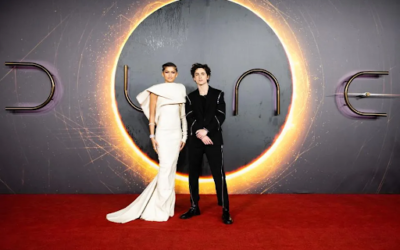Source: Gizmodo
If one is both a fan of cinema and frequent user of social media, then there is a very strong chance that they follow a wide variety of people and websites that directly relate to this passion for film. When using such platforms as Twitter or TikTok, it’s very easy to seek out others who share similar interests, so when it comes to expressing how much one either loves or hates a given work, it shouldn’t be long before someone else responds to such an expression; it may be an agreement or a disagreement, a simple like or a more detailed, but whatever the response may be, many of them can pile and lead to all sorts of usual content. Nowhere is this more evident than in meme culture; all it takes is one post in which a piece of media is recontextualized to fit a specific narrative. If said narrative comes across as appealing to enough people, then it will be repeated and further recontextualized, allowing the meme to have greater longevity and possibly renew interest in what the original subject of the meme was to begin with.
Sure enough, Internet memes have become a major reason for the renewed interest of certain films. Whether it’s the bizarre animated comedy “Bee Movie” or the previously maligned Star Wars prequels, memes based off these properties have allowed social media users to rediscover and perhaps find new appreciation in these previously dismissed works of cinema. To the studios that originally created these films, this can be rather pleasing news; if enough people are becoming increasingly interested in a given property, then it’s possible that they can find a way to capitalize on this newfound popularity. There is a major flaw in this logic though: social media users are not always an accurate reflection of the general public. Just because something is popular on the Internet doesn’t mean it’s popular everywhere else, and if a company moves too quickly to respond to an Internet trend that might not even stick around for much longer, the outcome can be quite embarrassing. This was the lesson that major film distributor Sony Pictures had to learn the hard way when they brought a film that had previously underperformed at the box office back to theaters, that being the vampire-superhero action film “Morbius”.
Based on the Marvel Comics character of the same name and starring Jared Leto in the titular role, “Morbius” was already coming off a very shaky production history by the time it first arrived in theaters. With its release date being pushed back several times due to the ongoing COVID-19 pandemic, the film ended up moving so far past its original July 2020 opening date that films that were originally intended to come out after “Morbius”, including “Venom: Let There Be Carnage” and “Spider-Man: No Way Home”, were instead beforehand. This resulted in the film having to undergo heavy revisions in order to better fit the larger cinematic universe narrative that included those other films, and unfortunately, those revisions arguably led to a less satisfactory product.
Despite the budget of “Morbius” being surprisingly smaller than what is usually given to superhero films, estimated to be anywhere between $75 and $83 million, the film nonetheless failed to meet even the lowest of expectations. As of June 6th, 2022, “Morbius” has only accumulated $73.4 million in North America and $90 million elsewhere, totalling to around $163.4 million worldwide and quickly becoming one of the least financially successful films based on a Marvel character. Its critical reception was even worse, with review aggregate site Rotten Tomatoes showing that the film has only a 17% approval rating from critics, many of whom cite a lackluster script and underwhelming visual effects as among the major reasons for the film’s low quality. Although the lower budget prevented “Morbius” from being a far bigger disaster than it could’ve been, it’s safe to say that very few people were genuinely pleased with how the film turned out.
In spite of (or perhaps because of, at least in an ironic sense) of how poorly received “Morbius” was, it didn’t take long for the Internet to get ahold of the film and go above and beyond to make it the next big meme generator. Among the original Morbius memes was the #MorbiusSweep movement, in which many sarcastically claimed that the film was actually one of the biggest money-makers of all time. Following the film’s release to premium video on-demand, Morbius’ (fake) catchphrase “It’s morbin’ time” quickly caught on throughout social media, some of which were even able to get laughs out of those who were unaware that the line wasn’t actually real. These were just a few of the many unusual memes that those who used such platforms as Discord and Tumblr were able to derive from the vampire film, and those in on the joke were quite clear that their “appreciation” of “Morbius” was not meant to be taken the least bit seriously.
One company that did take this activity seriously, however, was the studio that made “Morbius”. Apparently seeing these memes as a sign of newfound admiration for the film that was initially met with dismal responses (and not realizing quickly enough that it was all a big joke), Sony made the decision to re-release the film into around 1,000 theaters, seeing the surge in “popularity” as a sign that people were finally eager to see Jared Leto play a vampire on the big screen. Much to Sony’s surprise (and that of almost nobody else) though, that did not happen; on its opening day, the re-release only brought in $85,000 (roughly $82 per theater), which wasn’t enough for the film to even crack the top 10 at the box office. As many were to quick to point out, “Morbius” had bombed twice at the box office.
From this embarrassment, there are two lessons to be learned. The first: the way social media reacts to and interacts with a given film is not always genuine. Just because users are having fun making jokes out of a given property does not mean they actually like it, at least not enough to financially support it. The second (and perhaps most important of all): the Internet is not always an accurate reflection of the real world. Even if a film appears to be popular on a given social media website, it does not mean the rest of society feels the same way. If that were the case, then there would’ve most likely been more than four or five people turning out to each theater to experience “Morbius” on the big screen.




